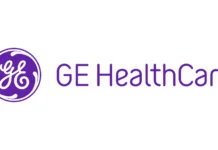A decade or more in the past, when people used to engage in conversations about at-home diagnostic testing, it was a common response to hear them ask, “Why would I pay for that when I can simply visit my GP?” However, it is now a significantly different landscape, where remote testing stands at the forefront of advancements in modern healthcare, and new markets for these services are burgeoning.
The demand for the ability to monitor one’s health or access information regarding various symptoms and health concerns without the need to visit a doctor’s office, perhaps without even leaving one’s home, has been steadily increasing. This shift can be attributed to several factors:
- Accessibility to GPs has become more challenging today compared to a decade or two ago, with overwhelmed healthcare services and limited appointment availability.
- Many individuals hesitate to “burden the doctor” with what they perceive as routine check-ups related to their lifestyle rather than acute diagnostic needs.
- People are leading increasingly hectic lives, making it inconvenient to find time for a GP appointment.
- There’s a growing acknowledgment that individuals should take more responsibility for their own health.
- People are now better informed about their health, with one in 14 Google searches being health-related. They are more proactive in preventing diseases rather than waiting for symptoms to manifest.
Given these changes, it’s easy to comprehend the rising demand for personalized, on-demand information from a trusted and accurate source.
This shift in healthcare dynamics has influenced government policy as well. The announcement by Health and Social Care Secretary Steve Barclay in June of this year about the rollout of a new digital health check across England from spring 2024 is evidence of this transformation. The aim is to provide an additional one million health checks over four years, with a focus on identifying cases of high blood pressure and preventing strokes and heart attacks through early detection of high cholesterol and diabetes.
While this initiative holds promise, the extensive experience in remote blood testing has revealed challenges that the government must address for success. Providing the necessary technology is just one piece of the puzzle. A robust plan to troubleshoot unexpected issues and ensure seamless service delivery is crucial. The system must also cater to hard-to-reach groups and support multiple languages for accessibility. Simplicity of use is paramount, and contingencies should be in place for issues such as sample collection difficulties or failures.
Importantly, motivating individuals who are reluctant to prioritize their health to take these tests is a challenge. Data indicates that providing tests for free may decrease motivation, whereas even a nominal contribution can inspire participation.
Remote blood testing can be highly effective for testing a large population quickly when motivation is present. For example, in a successful project with the NHS, an 83% sample return rate has been achieved through effective planning and continuous communication. Over three months, more than 250,000 emails were exchanged, with 37,000 test kits sent to volunteers, and 94% rated their remote blood testing experience as good or excellent.
Recent years have witnessed a transformation in remote diagnostic testing, with the advent of finger-prick blood testing in December 2011 being a key milestone. However, it’s essential to understand that remote diagnostic testing involves complexities beyond sending a testing kit and processing samples in a laboratory. Some biomarkers cannot be tested via finger-prick samples, and some degrade in transit, leading to test inaccuracies. Human error also plays a role in test failures.
As the demand for remote testing grows, more health and wellness brands are entering the market. From nutritionists to private doctors and supplement brands, many businesses seek to offer testing as a product or as an enhancement to their services. However, building a remote testing system from scratch presents financial, logistical, and regulatory challenges.
To address these issues, Medichecks established Plasma, a direct-to-business arm that offers a ready-made, trusted remote diagnostic testing service. Plasma’s setup is customizable to support organizations of various sizes and needs.
The expanding health and wellness sector presents significant opportunities for remote testing, not only in business applications but also in niche projects such as clinical trials and research studies. This sector has the potential to witness substantial growth in the coming years as organizations discover the convenience and benefits of remote diagnostics.
It is only the beginning of realizing the potential in this exciting sector, and the capacity to deliver diagnostics in this manner holds promise for innovation and could positively impact the well-being of an entire generation as the world moves closer to preventative healthcare.


















